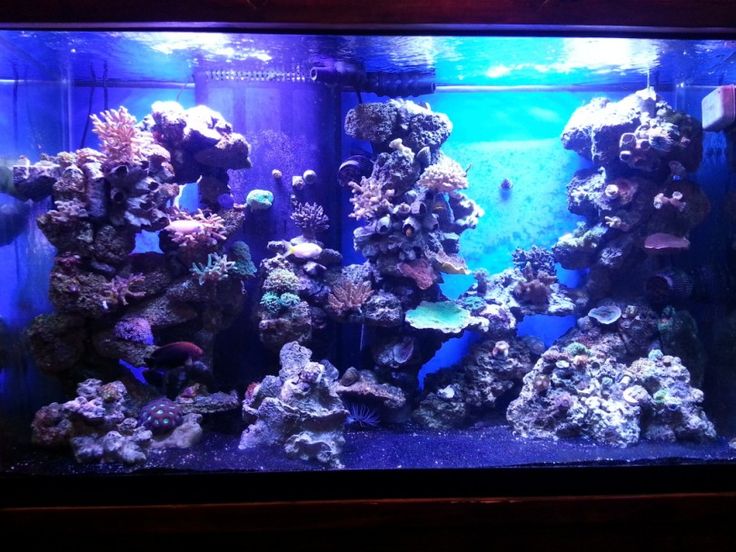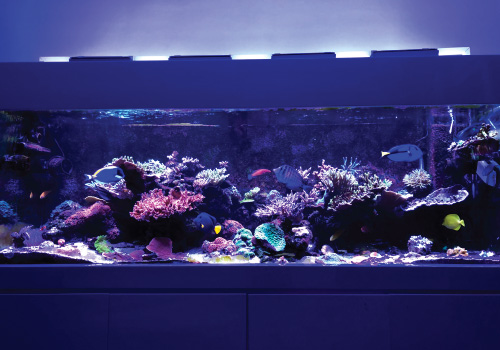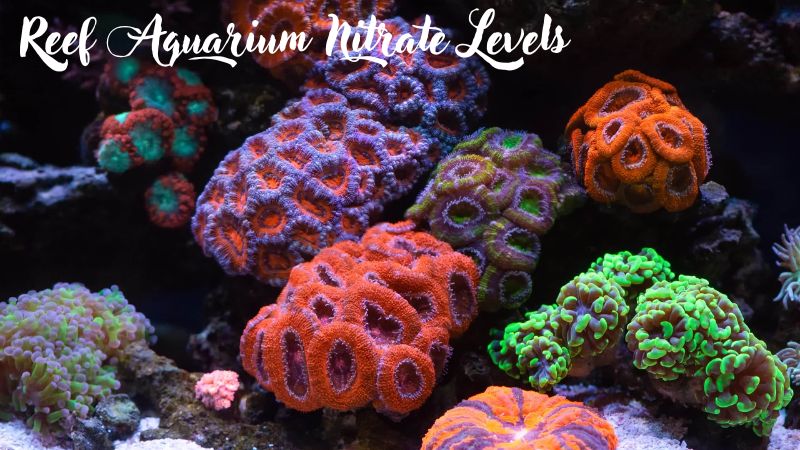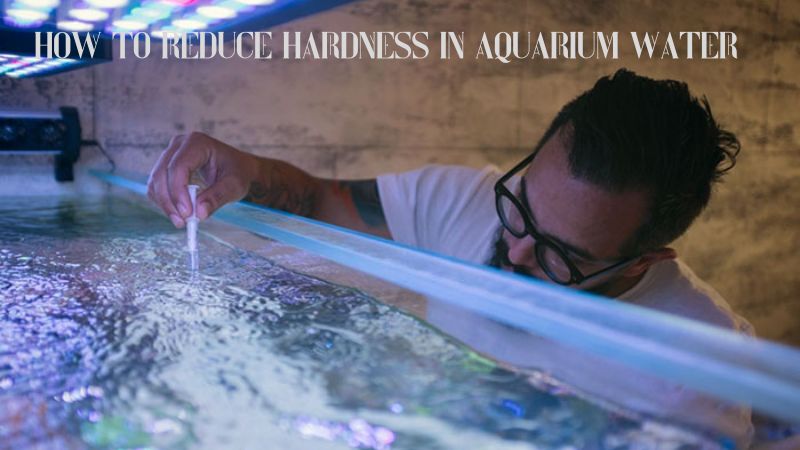In a reef aquarium, maintaining stable and appropriate nitrate levels is essential for the health and longevity of corals and other marine life. While nitrates are a natural byproduct of biological processes in the tank, excessive levels can harm corals and lead to various water quality issues. In this article, Fish Lover Zone will explore why nitrate levels are important, the ideal range for reef tanks, and effective methods for monitoring and controlling nitrate to ensure a thriving aquarium.
1. What Are Nitrates, and Why a reef aquarium nitrate levels?

Nitrates (NO₃⁻) are a form of nitrogen compound that naturally occurs in reef aquariums through the nitrogen cycle. In this process, ammonia from fish waste and decomposing organic matter is converted by beneficial bacteria into nitrite and, eventually, nitrate. While nitrates are less toxic than ammonia and nitrites, high nitrate levels can still be harmful to sensitive marine life like corals.
Effects of High Nitrate Levels
- Coral Stress: High nitrates can cause stress in corals, weakening their immune systems and making them more susceptible to diseases.
- Algae Growth: Elevated nitrate levels can fuel unwanted algae blooms, which compete with corals for light and nutrients.
- Reduced Coral Growth: Excessive nitrate levels may lead to poor coloration and reduced growth rates in corals, impacting the visual appeal of the tank.
2. Ideal a reef aquarium nitrate levels
Reef aquariums typically require low nitrate levels to support coral health and vibrant colors. Here are general guidelines for maintaining nitrate levels in a reef tank:
- Optimal Range: 1-5 ppm (parts per million) is often ideal for many reef aquariums, particularly those with SPS (Small Polyp Stony) corals, which are more sensitive to high nitrates.
- Acceptable Range: For mixed or LPS (Large Polyp Stony) coral tanks, 5-10 ppm is generally acceptable, though it’s best to stay closer to the lower end.
- High Nitrate Warning: Levels above 20 ppm are typically considered high and may harm coral health if sustained over long periods.
3. Monitoring reef aquarium nitrate levels

Regular testing is essential to maintain safe nitrate levels. Here are some tips for monitoring:
- Testing Frequency: Test nitrate levels weekly, especially in newer tanks, to establish a baseline and notice trends. For mature, stable systems, biweekly testing may be sufficient.
- Reliable Test Kits: Invest in high-quality nitrate test kits from reputable brands for accurate readings. Some aquarists also opt for digital nitrate testers for more precise results.
- Record Keeping: Track your nitrate levels over time to better understand your aquarium’s nitrate fluctuations. This can help you detect issues early and adjust maintenance routines as needed.
4. Causes of reef aquarium nitrate levels
Several factors can lead to rising nitrate levels, including:
- Overfeeding: Excess food decomposes and releases nitrogen compounds, leading to higher nitrate levels.
- Insufficient Water Changes: Regular water changes are crucial to removing nitrates from the aquarium.
- Overcrowded Tank: Too many fish or invertebrates can contribute to increased waste and, therefore, more nitrates.
- Poor Filtration: A lack of efficient biological filtration can slow down the breakdown of waste, leading to nitrate accumulation.
5. Effective Methods to Control and Lower Nitrate Levels
To maintain nitrate levels within the ideal range, consider these practical approaches:
Regular Water Changes
Changing 10-20% of your aquarium’s water weekly or biweekly can help reduce nitrates. Use RO/DI (Reverse Osmosis/Deionized) water to prevent introducing additional contaminants.
Refugium with Macroalgae
A refugium is a separate compartment in the aquarium where macroalgae (such as Chaetomorpha) can grow. Macroalgae absorb nitrates as they grow, reducing nitrate levels in the tank naturally.
Protein Skimming
Protein skimmers remove organic waste before it has a chance to break down into ammonia and nitrates. Ensure your skimmer is appropriately sized and working efficiently for optimal results.
Use of Nitrate-Reducing Media
Specialized media such as bio-pellets or nitrate-reducing resins can be placed in the filter system to lower nitrate levels. Follow the manufacturer’s instructions and monitor nitrate levels closely when using these products.
Carbon Dosing
Carbon dosing, using sources like vodka, vinegar, or commercially available solutions, can stimulate beneficial bacteria to consume nitrates. This method should be done with caution and consistent monitoring, as rapid changes can impact tank stability.
Feeding Control
Avoid overfeeding your fish, and remove any uneaten food from the tank. Feeding smaller, more frequent meals can help prevent excess waste.
6. Long-Term Maintenance Tips for Stable Nitrate Levels
Maintaining consistent, low nitrate levels requires good aquarium management. Here are some best practices for long-term success:
Routine Maintenance: In addition to regular water changes, clean the substrate and remove detritus to minimize nitrate buildup.
Reduce Bio-load: Avoid overcrowding the tank with fish, as this increases waste production. Research compatible stocking levels for your aquarium size and coral types.
Maintain Proper Filtration: Ensure all filtration systems, including mechanical, biological, and chemical filters, are functioning optimally.
7. Troubleshooting Common Issues with Nitrate Control
If you find that nitrate levels remain high despite your efforts, consider these troubleshooting tips:
- Check Filter Maintenance: Dirty or clogged filters can reduce their effectiveness in removing nitrates.
- Evaluate Feeding Habits: Assess if feeding routines may be contributing to excess waste and nitrates.
- Inspect Live Rock and Substrate: Old or compacted substrate can trap debris and detritus, contributing to elevated nitrate levels. Occasionally vacuuming or replacing old substrate can help.
Final Thoughts
Maintaining low nitrate levels is key to a healthy, vibrant reef aquarium. By understanding the causes of nitrate buildup and implementing effective nitrate control methods, you can create a stable environment where corals and marine life thrive. Regular monitoring and proactive maintenance are the best strategies to achieve and sustain ideal reef aquarium nitrate levels, helping to preserve the beauty and health of your underwater ecosystem.





